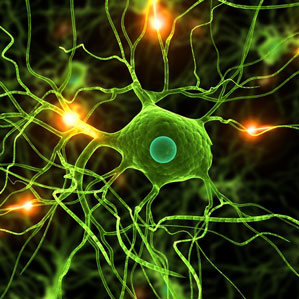What Progress Has the BRAIN Initiative Made So Far?
Scientists still have a lot to learn about the human brain—including the underlying causes of brain disorders such as Parkinson’s and Alzheimer’s. Getting a better idea of how the brain works could help uncover better treatments. To jump-start that research, President Obama launched the Brain Research through Advancing Innovative Neurotechnologies (BRAIN) Initiative in 2013. The project has garnered more than $300 million in funding from agencies including the Defense Advanced Research Projects Agency (DARPA) and the National Institutes of Health (NIH), as well as universities, companies, and other institutions. This includes $46 million in grants that the NIH awarded to 58 projects last September.

On-off switch
University of North Carolina researchers have found a way to turn behaviors such as eating on and off in mice. These behaviors are triggered by chemical signals in the brain, which are controlled by proteins at the surface of neurons. Scientists modified the chemical structure of these receptors in the lab so that the sites only respond to a certain type of compound. The scientists could then turn these behaviors on and off by injecting the compound into the mice brains. The scientists are studying multiple receptors’ activity in relation to each other, which could help researchers better understand the brain’s role in biological functions or diseases like Alzheimer’s and Parkinson’s that occur when signaling systems don’t function properly. The work is outlined in a May Neuron paper and supported by a $2.84 million grant under the BRAIN initiative.
Making decisions
Researchers from Princeton received a $1.02 million grant to study working memory, including how the brain makes decisions based on evidence it gathers within only a few hundred milliseconds. In a January Nature letter, Carlos Brody’s team designs an experiment in which a rat hear clicks coming through speakers positioned on its left and right side. The goal is to move in the direction of the speaker that sounded the most clicks, explains a post on the NIH website describing the technology. By studying the rate at which neurons were firing in the rats’ brains, the scientists saw that an area of the brain known as the posterior parietal cortex was responsible for accumulating the evidence about which side a rat should choose. Another area of the brain called the prefrontal cortex gives the rat the signal to move in a certain direction. This experiment challenges some previous findings that point to the prefrontal cortex having a role in gathering information for making decisions.
Better prosthetics
A team of researchers from the University of Pittsburgh, West Virginia University, and Salt Lake City medical device manufacturer Ripple are developing a prosthetic limb that allows amputees to feel sensations as they would with a natural arm, thanks to sensors implanted in the arm that record electrical activity from the muscles that are left after an amputation. When decoded, those signals control the prosthetic hand’s movements, explains Robert Gaunt, assistant professor at the University of Pittsburgh. To create the feeling, sensors in the prosthetic hand get converted into electrical pulses that stimulate neurons near the spinal cord, he says. Instead of connecting the prosthetic limb directly to the brain, the researchers are using the body’s peripheral nervous system. Gaunt notes that one of the limitations of today’s prosthetics is that they only perform one movement at a time, like opening or closing a hand or rotating a wrist. His team’s artificial limb would perform six different types of movements at a time, in addition to providing sensory feedback. The technology could be ready within four years for patients to test at home, the research team reported in February. The research is part of a DARPA program.
New imaging
One aim of the BRAIN Initiative is to develop new imaging techniques, says U.S. National Institute of Mental Health director Thomas Insel in a blog post highlighting several advances under the initiative so far. One of them is a new method developed by researchers at Washington University and Texas A&M University. This so-called photoacoustic microscopy technique allows researchers to take pictures with a high enough resolution to see individual capillaries and the blood oxygenation in a mouse’s brain. Images taken with traditional microscopes would become blurry at that level because of the way that light moves through tissue, the researchers explain in a May IEEE Pulse article. The new imaging technique is described in a March Nature Methods article. A $2.7 million grant from the NIH is funding the research.
The Takeaway:
Since President Obama announced the BRAIN Initiative in 2013, funding by agencies like NIH and DARPA is yielding early findings about decision making, imaging, and how brain circuits are involved in certain behaviors. Many of these research projects will take years to mature.
Do you have a big question? Send suggestions to questionoftheweek@technologyreview.com
Keep Reading
Most Popular
Large language models can do jaw-dropping things. But nobody knows exactly why.
And that's a problem. Figuring it out is one of the biggest scientific puzzles of our time and a crucial step towards controlling more powerful future models.
The problem with plug-in hybrids? Their drivers.
Plug-in hybrids are often sold as a transition to EVs, but new data from Europe shows we’re still underestimating the emissions they produce.
Google DeepMind’s new generative model makes Super Mario–like games from scratch
Genie learns how to control games by watching hours and hours of video. It could help train next-gen robots too.
How scientists traced a mysterious covid case back to six toilets
When wastewater surveillance turns into a hunt for a single infected individual, the ethics get tricky.
Stay connected
Get the latest updates from
MIT Technology Review
Discover special offers, top stories, upcoming events, and more.